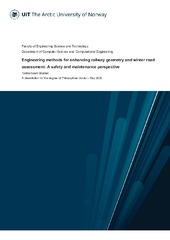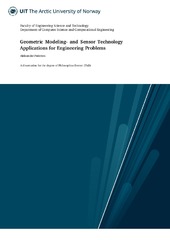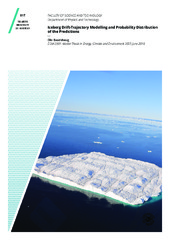Explainability of deep-learning-derived input function in dynamic PET imaging
Permanent lenke
https://hdl.handle.net/10037/37236Dato
2023-06-01Type
Master thesisMastergradsoppgave
Forfatter
Aspheim, Fredrik EmilSammendrag
Dynamic positron emission tomography (PET) imaging is a valuable tool in medical research and practice. By measuring the distribution of a radioactive tracer within the body over time, dynamic PET imaging allows the visualization of various physiological and biological processes. Furthermore, it allows for quantification of such processes using tracer kinetic modeling. However, kinetic modeling requires knowledge of the arterial input function (AIF), i.e., the tracer time-activity curve in arterial blood. Despite the accuracy of continuous blood sampling, this procedure is invasive and necessitates alternative estimation methods. Among others, the image-derived input function (IDIF) is commonly used, but requires labor-intensive manual delineation of regions of interest during data preprocessing. In recent years, deep learning has emerged as a promising method for AIF estimation. This thesis aims to develop a robust deep learning methodology for AIF estimation in small animal imaging using dynamic PET, that also ensures that the model is interpretable. Two models, the ResNet, and the AttNet, were examined. Both models were inspired from state-of-the-art deep learning architectures for classification and segmentation tasks. In this work, the networks were modified to perform regression on four-dimensional PET data. The ResNet provides a well-known and computationally efficient design, allowing to train deep networks. On the other hand, the AttNet architecture is based on an encoder-decoder design, providing a bottleneck which enforce the network to learn relevant imaging features. This network also provides insights into the model predictions by using multiple attention mechanisms, which allows for visualization of the model focus in the different layers. Both demonstrated a strong agreement between their predicted deep-learning-derived input function (DLIF) and the IDIF, with the advantage of bypassing the tedious manual segmentation of the data. While both models performed well on kinetic modeling, a detailed interpretability analysis revealed that the ResNet heavily relied on bias terms and failed to learn significant image features. In contrast, the AttNet successfully avoided these limitations, providing useful insights through attention maps and demonstrating flexibility with its fully convolutional architecture. This work represents an important step towards the development of reliable, flexible, and interpretable deep learning methodologies for small-animal dynamic PET imaging.
Forlag
UiT Norges arktiske universitetUiT The Arctic University of Norway
Metadata
Vis full innførselSamlinger
Copyright 2023 The Author(s)
Følgende lisensfil er knyttet til denne innførselen:
Med mindre det står noe annet, er denne innførselens lisens beskrevet som Attribution-NonCommercial-ShareAlike 4.0 International (CC BY-NC-SA 4.0)
Relaterte innførsler
Viser innførsler relatert til tittel, forfatter og emneord.
-
Engineering methods for enhancing railway geometry and winter road assessment: A safety and maintenance perspective
Brustad, Tanita Fossli (Doctoral thesis; Doktorgradsavhandling, 2020-06-22)In many areas around the world there are limited transportation possibilities when travelling between key cities. If these areas also experience demanding weather conditions or geography, getting from A to B, during difficult conditions, is usually not optimal in regards to accessibility, safety, and comfort. Under challenging conditions, two essential elements in strengthening accessibility, safety, ... -
Geometric Modeling- and Sensor Technology Applications for Engineering Problems
Pedersen, Aleksander (Doctoral thesis; Doktorgradsavhandling, 2020-10-20)In applications for technical problems, Geometric modeling and sensor technology are key in both scientific and industrial development. Simulations and visualization techniques are the next step after defining geometry models and data types. This thesis attempts to combine different aspects of geometric modeling and sensor technology as well as to facilitate simulation and visualization. It includes ... -
Iceberg Drift-Trajectory Modelling and Probability Distributions of the Predictions
Baadshaug, Ole (Master thesis; Mastergradsoppgave, 2018-06-29)Moving icebergs represent a major problem for shipping, as well as for oil and gas installations in ice infested waters. To be able to take actions against hazardous icebergs, it is necessary to develop models for prediction of iceberg drift trajectories. Many models have been developed in order to do so, using different approaches. These approaches can be divided into two main categories, dynamic ...


 English
English norsk
norsk



